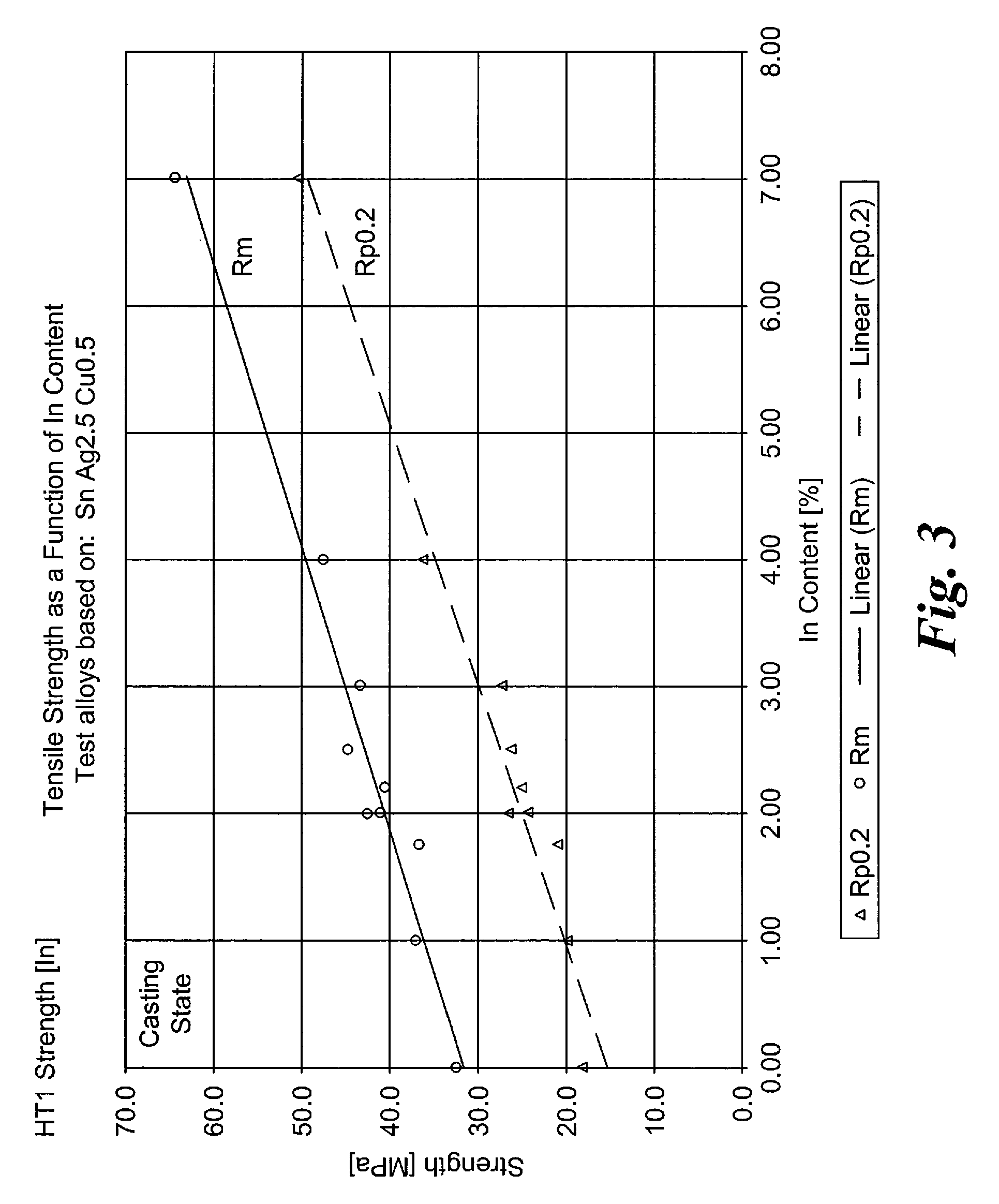Lead-Free Solder with Improved Properties at Temperatures >150°C
a technology of lead-free solder and improved properties, applied in the field of solder, can solve the problem that indium alloys are not suitable for the production of solder balls for chip fabrication
- Summary
- Abstract
- Description
- Claims
- Application Information
AI Technical Summary
Benefits of technology
Problems solved by technology
Method used
Image
Examples
invention example 1
[0069]Sn 95.49, Ag 2, Cu 0.5, In 2, Nd 0.01 shows, in addition to further improved mechanical properties compared with Comparison Example 4, a suppressed formation of the Cu3Sn phase and a lower growth of the same at temperatures above 150° C. With this example according to the invention, the material fatigue is drastically slowed down thereby with excellent mechanical properties.
[0070]If the doping with neodymium from Example 1 is discontinued according to Comparison Example 5, the formation of the Cu3Sn phase is indeed small at the beginning, but the Ag3Sn phase tends toward growth and the formation of coarse plates or needles at temperatures above 150° C. and therefore leads to unacceptable material fatigue and the risk of short circuit formation due to the crystal growth of Ag3Sn.
invention example 2
[0071]Example 2 with an increase in the indium concentration by 1%, compared with Example 1, causes further improved mechanical properties. The formation of the Cu3Sn phase when soldered on a copper track is further reduced, compared with Example 1, and the material fatigue diminishes even more at temperatures above 150° C.
invention example 3
[0072]A further increase of 1 wt. % indium according to Example 3 produces, in addition to more improved mechanical properties, no relevant decrease in the formation of the Cu3Sn phase compared with Example 2. The material fatigue at temperatures above 150° C. is reduced compared with Example 2.
PUM
| Property | Measurement | Unit |
|---|---|---|
| melting temperature | aaaaa | aaaaa |
| temperatures | aaaaa | aaaaa |
| temperatures | aaaaa | aaaaa |
Abstract
Description
Claims
Application Information
 Login to View More
Login to View More - R&D
- Intellectual Property
- Life Sciences
- Materials
- Tech Scout
- Unparalleled Data Quality
- Higher Quality Content
- 60% Fewer Hallucinations
Browse by: Latest US Patents, China's latest patents, Technical Efficacy Thesaurus, Application Domain, Technology Topic, Popular Technical Reports.
© 2025 PatSnap. All rights reserved.Legal|Privacy policy|Modern Slavery Act Transparency Statement|Sitemap|About US| Contact US: help@patsnap.com



